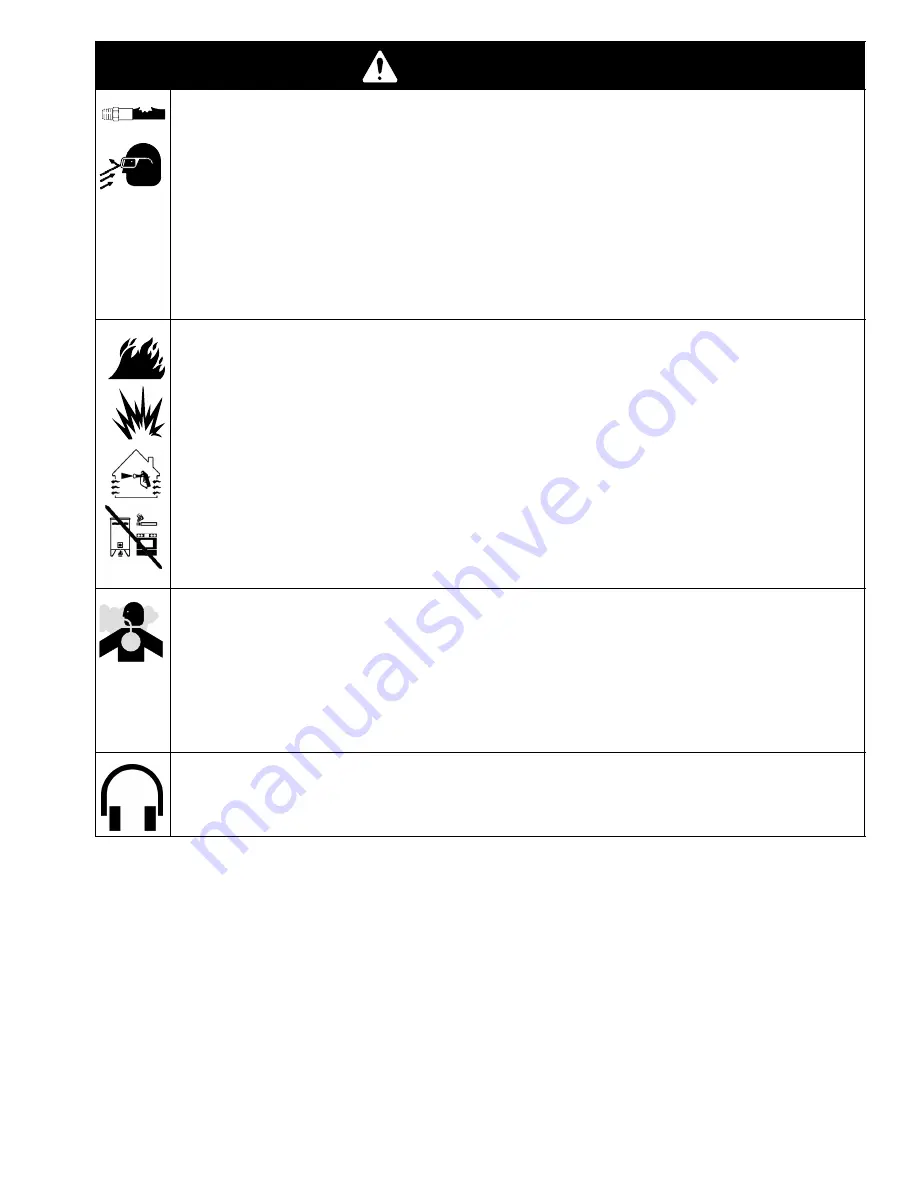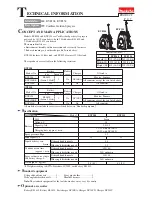
3
WARNING
PRESSURIZED EQUIPMENT HAZARD
Fluid from the gun/dispense valve, leaks, or ruptured components can splash in the eyes or on skin
and cause serious injury.
Follow the
Pressure Relief Procedure
on page 11 whenever you are instructed to relieve pres-
sure.
Do not stop or deflect fluid leaks with your hand, body, glove, or rag.
Do not point the spray gun at anyone or at any part of the body.
Tighten all fluid connections before operating the equipment.
Check hoses, tubes, and couplings daily. Replace worn or damaged parts immediately.
FIRE AND EXPLOSION HAZARD
Flammable fumes, such as solvent and paint fumes, in work area can ignite or explode. To help pre-
vent fire and explosion:
Use equipment only in well ventilated area.
Eliminate all ignition sources; such as pilot lights, cigarettes, portable electric lamps, and plastic
drop cloths (potential static arc).
Keep work area free of debris, including solvent, rags, and gasoline.
Do not plug or unplug power cords or turn lights on or off when flammable fumes are present.
Ground equipment and conductive objects in work area. See
Grounding
instructions on page 11.
If there is static sparking or you feel a shock,
stop operation immediately
. Do not use equipment
until you identify and correct the problem.
TOXIC FLUID OR FUMES HAZARD
Toxic fluids or fumes can cause serious injury or death if splashed in the eyes or on skin, inhaled, or
swallowed.
Read MSDS’s to know the specific hazards of the fluids you are using.
Store hazardous fluid in approved containers, and dispose of it according to applicable guidelines.
Gloves must be worn for spraying or cleaning equipment.
NOISE HAZARD
You must wear appropriate protective equipment when operating, servicing, or when in the operating
area of the equipment to help protect you from serious injury, including hearing loss.




































